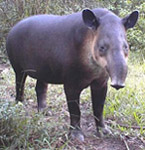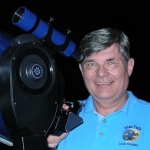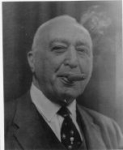CPAP over 10,000ft - Need Advice
-
datracer99
- Posts: 21
- Joined: Tue Feb 24, 2009 3:22 am
- Location: Sydney, Australia
CPAP over 10,000ft - Need Advice
Hi all
New user here - only got diagnosed 3 weeks ago, and now have a trial CPAP machine set on 10cm.
Trying to get used to it!
When I was diagnosed I was just 6 weeks away from leaving for my dream holiday in South America, including walking the Inca trail - which was a bit optimistic but i was putting my tiredness down to too much work and no holiday for 3 years - not sleep Apnea
I had to cancel my holiday, but my flights are non refundable so I am going to defer them till later this year.
I am still determined to go to Peru, and do everything except walk the Inca trail.
My sleep doctor is fine with this.
Since I haven't purchased a machine yet I want to buy one that I can take with me - stuff the weight and bulk, I know I'll enjoy the holiday more if i can sleep properly
The thing is, after madly researching CPAP machines I can't find any that are rated above 9000 ft, and I want to go to Lake Titicaca which is about 12500 feet, and Cuzco which is at 11,600ft.
I'm changing from doing a fairly basic tour to a more comfort oriented tour, so i should have access to power. I'm also trying to get a CPAP which runs on 12v, so I can run via a battery system as a backup in case any hotels have a poor power supply (I played with electronics lots when I was young, so building a combined power supply with battery backup is manageable).
I noticed quite a few members who mention they have been to Peru, but don't always have sufficent detail. And some mixed responses, particulalry on the Goodknight 420.
So from users who have been to high altitude (over 10,000 ft), I am hoping to find out:
How high did you sleep.
What machine were you using
Did it work properly?
What is your titration level.
Thanks, hopefully you can help my dream come true.
New user here - only got diagnosed 3 weeks ago, and now have a trial CPAP machine set on 10cm.
Trying to get used to it!
When I was diagnosed I was just 6 weeks away from leaving for my dream holiday in South America, including walking the Inca trail - which was a bit optimistic but i was putting my tiredness down to too much work and no holiday for 3 years - not sleep Apnea
I had to cancel my holiday, but my flights are non refundable so I am going to defer them till later this year.
I am still determined to go to Peru, and do everything except walk the Inca trail.
My sleep doctor is fine with this.
Since I haven't purchased a machine yet I want to buy one that I can take with me - stuff the weight and bulk, I know I'll enjoy the holiday more if i can sleep properly
The thing is, after madly researching CPAP machines I can't find any that are rated above 9000 ft, and I want to go to Lake Titicaca which is about 12500 feet, and Cuzco which is at 11,600ft.
I'm changing from doing a fairly basic tour to a more comfort oriented tour, so i should have access to power. I'm also trying to get a CPAP which runs on 12v, so I can run via a battery system as a backup in case any hotels have a poor power supply (I played with electronics lots when I was young, so building a combined power supply with battery backup is manageable).
I noticed quite a few members who mention they have been to Peru, but don't always have sufficent detail. And some mixed responses, particulalry on the Goodknight 420.
So from users who have been to high altitude (over 10,000 ft), I am hoping to find out:
How high did you sleep.
What machine were you using
Did it work properly?
What is your titration level.
Thanks, hopefully you can help my dream come true.
Intellipap Auto in CPAP Mode, 10cm, Data module and software, Mirage Micro
Re: CPAP over 10,000ft - Need Advice
At the risk of sounding trivial - another 560 feet and you qualify for the CPAP Chapter of the 2 Mile High Club. Very exclusive membership list
K
K
- billbolton
- Posts: 2264
- Joined: Wed Jun 07, 2006 7:46 pm
- Location: Sydney, Australia
Re: CPAP over 10,000ft - Need Advice
There aren't any. The maximum altitude adjustment on any xPAP machine I have ever seen is 2400 metres, which is the equivalent of "cabin pressure" on a commercial aircraft.datracer99 wrote:The thing is, after madly researching CPAP machines I can't find any that are rated above 9000 ft[
If your titration pressure is not too high, you can might get away with setting the alitude adjustment to 2400 meter range and then adding a several more centimetres to the normal pressure setting.datracer99 wrote:and I want to go to Lake Titicaca which is about 12500 feet, and Cuzco which is at 11,600ft.
However, there may be other issues in terms of xPAP machine operation which could be be adversely impacted at those altitudes, so you are really going to be on your own with whatever you do.
At higher altitudes the xPAP machine has to work hard, and so uses more power. Depending in your normal titration pressure, you might end up with relatively poor operational duartion from a battery a very high altitudes.datracer99 wrote:I'm also trying to get a CPAP which runs on 12v, so I can run via a battery system as a backup in case any hotels have a poor power supply
Cheers,
Bill
Re: CPAP over 10,000ft - Need Advice
Is it that the CPAPs can't work above 10 000ft or that their automatic altitude adjustment doesn't work past that height? If the latter, you can change your pressure manually to ocmpensate for the altitude.
Edit:- Oops, I see Bill answered my question before I asked it.
Edit:- Oops, I see Bill answered my question before I asked it.
Last edited by ColinP on Tue Feb 24, 2009 7:18 am, edited 1 time in total.
- StillAnotherGuest
- Posts: 1005
- Joined: Sun Sep 24, 2006 6:43 pm
I Would Ask
Ascent to that altitude could very well generate a phenomenon known as "periodic breathing associated with altitude", a form of central apnea. It can happen to anybody, however, it seems to be self-limiting (disappears after a few days).
Did you ask your physician about your proposed trip and the effects of altitude on your sleep-disordered breathing (SBD)? There are a couple of drugs that can be taken to lessen the effects of periodic breathing associated with altitude.
Overall, I think there would be a lot of factors to consider, ranging from some real potential hazards if your SDB was of the severe desaturating type and for some reason you couldn't wear your CPAP, to the other end of the spectrum where your SDB was a little more central in origin. In that case, and if your "trial" included being on an auto-titrating unit, then you might end up with some really screwy data for a few days.
SAG
What does "trial" mean? A lot of patients are given "trials" of CPAP because effective pressures cannot be found, and that in turn from a tendency to have a form of central apnea called CompSAS, so now if you go up to altitude there's going to even more central apneas...datracer99 wrote:New user here - only got diagnosed 3 weeks ago, and now have a trial CPAP machine set on 10cm.
Did you ask your physician about your proposed trip and the effects of altitude on your sleep-disordered breathing (SBD)? There are a couple of drugs that can be taken to lessen the effects of periodic breathing associated with altitude.
Overall, I think there would be a lot of factors to consider, ranging from some real potential hazards if your SDB was of the severe desaturating type and for some reason you couldn't wear your CPAP, to the other end of the spectrum where your SDB was a little more central in origin. In that case, and if your "trial" included being on an auto-titrating unit, then you might end up with some really screwy data for a few days.
SAG

Aromatherapy may help CPAP compliance. Lavender, Mandarin, Chamomile, and Sweet Marjoram aid in relaxation and sleep. Nature's Gift has these and a blend of all four called SleepEase.
Re: CPAP over 10,000ft - Need Advice
Doing the math, you'd need to drop the pressure 8 cm/H2O to compensate between 10k and 12.5k ft. And about 5cm for the intermediate site.
BUT, that assumes the machine will accurately adjust up to 10k and NO FURTHER. A pretty shakey assumption, I would guess.
Sea level: 1027cm/H2O
10,000ft: 990cm
11,600ft: 985cm (-5 from 10k)
12,500ft: 982cm (-8 from 10k)
BUT, that assumes the machine will accurately adjust up to 10k and NO FURTHER. A pretty shakey assumption, I would guess.
Sea level: 1027cm/H2O
10,000ft: 990cm
11,600ft: 985cm (-5 from 10k)
12,500ft: 982cm (-8 from 10k)
The OSA patient died quietly in his sleep.
Unlike his passengers who died screaming as the car went over the cliff...
Unlike his passengers who died screaming as the car went over the cliff...
-
HeirloomGardener
- Posts: 20
- Joined: Sat Mar 15, 2008 10:33 pm
- Location: Minnesota
- Contact:
Re: CPAP over 10,000ft - Need Advice
Based on my understanding of how these machines work, I think it an auto-adjusting unit may work at higher altitudes.
The pressure setting (10 cm H2O in your case) is a "gauge pressure". In other words, the machine should deliver air at a pressure that is 10 cm H20 higher than the atmospheric pressure at your location.
There are basically two methods to control the pressure. One method is to map blower speed to delivered pressure. The problem with this is that higher blower speeds are needed for the same pressure if the air density goes down, which is what happens when you go to higher altitudes. I think machines that have a manual altitude adjustment use some variation of this method.
The other method is to have a feedback loop to control the blower speed. To do this, the machine must have a pressure sensor (gauge pressure, or "GP"). I've had my machine apart (I needed to dry it out ), and it appears to have a GP sensor as well as a flow sensor. The control circuitry will adjust the blower speed to get the correct GP reading. This will automatically compensate for lower air density. This method should continue to work at very high altitudes, but there may be problems. The air density may be low enough that the blower is simply unable to produce the higher pressures (this could be an issue if you are in the 15-20 cm range). It is also possible that the control algorithm may not work correctly.
I'd suggest getting a machine that automatically adjusts for altitude and would therefore have a GP sensor in it (mine is the Respironics M Series Auto). Take a manometer along and verify the pressure it produces at the high altitude.
The pressure setting (10 cm H2O in your case) is a "gauge pressure". In other words, the machine should deliver air at a pressure that is 10 cm H20 higher than the atmospheric pressure at your location.
There are basically two methods to control the pressure. One method is to map blower speed to delivered pressure. The problem with this is that higher blower speeds are needed for the same pressure if the air density goes down, which is what happens when you go to higher altitudes. I think machines that have a manual altitude adjustment use some variation of this method.
The other method is to have a feedback loop to control the blower speed. To do this, the machine must have a pressure sensor (gauge pressure, or "GP"). I've had my machine apart (I needed to dry it out ), and it appears to have a GP sensor as well as a flow sensor. The control circuitry will adjust the blower speed to get the correct GP reading. This will automatically compensate for lower air density. This method should continue to work at very high altitudes, but there may be problems. The air density may be low enough that the blower is simply unable to produce the higher pressures (this could be an issue if you are in the 15-20 cm range). It is also possible that the control algorithm may not work correctly.
I'd suggest getting a machine that automatically adjusts for altitude and would therefore have a GP sensor in it (mine is the Respironics M Series Auto). Take a manometer along and verify the pressure it produces at the high altitude.
-
datracer99
- Posts: 21
- Joined: Tue Feb 24, 2009 3:22 am
- Location: Sydney, Australia
Re: I Would Ask
I have obstructive apnea. From the research I have done this changes to central apnea at high altitudes.StillAnotherGuest wrote:Ascent to that altitude could very well generate a phenomenon known as "periodic breathing associated with altitude", a form of central apnea. It can happen to anybody, however, it seems to be self-limiting (disappears after a few days).
What does "trial" mean? A lot of patients are given "trials" of CPAP because effective pressures cannot be found, and that in turn from a tendency to have a form of central apnea called CompSAS, so now if you go up to altitude there's going to even more central apneas...datracer99 wrote:New user here - only got diagnosed 3 weeks ago, and now have a trial CPAP machine set on 10cm.
Did you ask your physician about your proposed trip and the effects of altitude on your sleep-disordered breathing (SBD)? There are a couple of drugs that can be taken to lessen the effects of periodic breathing associated with altitude.
Overall, I think there would be a lot of factors to consider, ranging from some real potential hazards if your SDB was of the severe desaturating type and for some reason you couldn't wear your CPAP, to the other end of the spectrum where your SDB was a little more central in origin. In that case, and if your "trial" included being on an auto-titrating unit, then you might end up with some really screwy data for a few days.
SAG
By trial machine I mean I have a rental. I am on a fixed pressure of 10cm, though when i'm not in REM sleep I can get by with 8cm - probably not worth getting an auto machine for 2cm difference.
Yes, i spoke to my sleep doctor about the trip and explained I wanted to go to 13000 feet and he said to go for it.
But I am trying to cover my bases.
I know there are people out there who have done the trip I planned - I just hope some of them are still on the forum.
Intellipap Auto in CPAP Mode, 10cm, Data module and software, Mirage Micro
Re: CPAP over 10,000ft - Need Advice
well, I have done that trip, and I most likely had sleep apnea then but it had not been diagnosed. The headaches I had had nightly for years prior to Peru were nothing compared to the headache I, and my companion - who is, incidently being checked for OSA right now - suffered for 12 hrs. on our first night there. on arrival I felt so bad I refused to take a room higher than the lst floor,(lift not working) and threw up before I got there.
That first night we thought we might die, then kinda hoped we would! - well not really , but we seriously considered getting to H out of there when we could stand up. Like most things it passed and we were finally able to enjoy it all. Guess you will be flying in, we went up there by bus from Chile, my idea of stopping off at a village part way up to adjust to altitude was rejected Just TAKE IT EASY AT FIRST WHEN YOU GET THERE, NO GALLOPING ABOUT UP AND DOWN HILLS. be the slowest guy up Machu Pichu steps at the ruins, you will probably get to the top first that way. See if you can get an afternoon trip up there, hordes of people go in the morning, unless things have changed.
Please let us know what you finally did re the cpap settings etc and how you made out. Have a great trip, we loved Peru but Don't use your back pocket!
p.s. they call it Sorache, not sure of spelling, we tried chewing coca leaves and drinking the tea they make from it, who knows if it helped.
That first night we thought we might die, then kinda hoped we would! - well not really , but we seriously considered getting to H out of there when we could stand up. Like most things it passed and we were finally able to enjoy it all. Guess you will be flying in, we went up there by bus from Chile, my idea of stopping off at a village part way up to adjust to altitude was rejected Just TAKE IT EASY AT FIRST WHEN YOU GET THERE, NO GALLOPING ABOUT UP AND DOWN HILLS. be the slowest guy up Machu Pichu steps at the ruins, you will probably get to the top first that way. See if you can get an afternoon trip up there, hordes of people go in the morning, unless things have changed.
Please let us know what you finally did re the cpap settings etc and how you made out. Have a great trip, we loved Peru but Don't use your back pocket!
p.s. they call it Sorache, not sure of spelling, we tried chewing coca leaves and drinking the tea they make from it, who knows if it helped.
Re: CPAP over 10,000ft - Need Advice
I'm not sure abouth the number, LinkC, but I'm sure about the direction: the machine pressure has to be raised.
When a person was titrated at sea level - more or less - and the conclusion was a pressure of 10cm/h20 is needed, that is an ablsolute number. 10cm/h2o will keep their airway open,and that's what they need, no matter how high they are. The machine has to gather air from the outside, compress it and supply it at that absolute pressure.
When there's less air at the input, the machine has to work harder at getting the same output. When it no longer manages to handle this automatically, you have to raise the output pressure manually.
Bill's analysis was spot-on.
O.
When a person was titrated at sea level - more or less - and the conclusion was a pressure of 10cm/h20 is needed, that is an ablsolute number. 10cm/h2o will keep their airway open,and that's what they need, no matter how high they are. The machine has to gather air from the outside, compress it and supply it at that absolute pressure.
When there's less air at the input, the machine has to work harder at getting the same output. When it no longer manages to handle this automatically, you have to raise the output pressure manually.
Bill's analysis was spot-on.
O.
_________________
| Mask: AirFit™ P10 Nasal Pillow CPAP Mask with Headgear |
| Additional Comments: Machine: Resmed AirSense10 for Her with Climateline heated hose ; alternating masks. |
And now here is my secret, a very simple secret; it is only with the heart that one can see rightly, what is essential is invisible to the eye.
Antoine de Saint-Exupery
Good advice is compromised by missing data
Forum member Dog Slobber Nov. 2023
Antoine de Saint-Exupery
Good advice is compromised by missing data
Forum member Dog Slobber Nov. 2023
-
HeirloomGardener
- Posts: 20
- Joined: Sat Mar 15, 2008 10:33 pm
- Location: Minnesota
- Contact:
Re: CPAP over 10,000ft - Need Advice
Actually, the correct term is "gauge pressure". Gauge pressure measures the difference from atmospheric pressure. Add the gauge pressure to the atmospheric pressure to get absolute pressure. For example, if atmospheric pressure is 1034 cm H2O (760 mm Hg) and the CPAP pressure (gauge pressure) is 10 cm, the absolute pressure is 1044 cm H20. You don't need to maintain this absolute pressure at higher altitudes, but you do need to maintain the same gauge pressure.ozij wrote:I'm not sure abouth the number, LinkC, but I'm sure about the direction: the machine pressure has to be raised.
When a person was titrated at sea level - more or less - and the conclusion was a pressure of 10cm/h20 is needed, that is an ablsolute number. 10cm/h2o will keep their airway open,and that's what they need, no matter how high they are. The machine has to gather air from the outside, compress it and supply it at that absolute pressure.
When there's less air at the input, the machine has to work harder at getting the same output. When it no longer manages to handle this automatically, you have to raise the output pressure manually.
Bill's analysis was spot-on.
O.
A water column manometer measures gauge pressure.
Re: CPAP over 10,000ft - Need Advice
Just get a hose that's 2 miles long. Then you'll have over 500 feet of hose to spare.
_________________
| Machine: DreamStation Auto CPAP Machine |
| Mask: AirFit™ F20 For Her Full Face CPAP Mask with Headgear |
| Humidifier: DreamStation Heated Humidifier |
| Additional Comments: Max pressure set at 15cm |
Re: CPAP over 10,000ft - Need Advice
Jason S. wrote:Just get a hose that's 2 miles long. Then you'll have over 500 feet of hose to spare.
...stuff the weight and bulk, huh?
O.
_________________
| Mask: AirFit™ P10 Nasal Pillow CPAP Mask with Headgear |
| Additional Comments: Machine: Resmed AirSense10 for Her with Climateline heated hose ; alternating masks. |
And now here is my secret, a very simple secret; it is only with the heart that one can see rightly, what is essential is invisible to the eye.
Antoine de Saint-Exupery
Good advice is compromised by missing data
Forum member Dog Slobber Nov. 2023
Antoine de Saint-Exupery
Good advice is compromised by missing data
Forum member Dog Slobber Nov. 2023
-
datracer99
- Posts: 21
- Joined: Tue Feb 24, 2009 3:22 am
- Location: Sydney, Australia
Re: CPAP over 10,000ft - Need Advice
OK, so I will have to put some limit on the weight/bulk....
So, has anyone been to Peru with a CPAP and lived to tell the tale?
So, has anyone been to Peru with a CPAP and lived to tell the tale?
Intellipap Auto in CPAP Mode, 10cm, Data module and software, Mirage Micro
Re: CPAP over 10,000ft - Need Advice
I'll use S8 Autoset II above 11800ft for quite weeks soon. I talked with Resmed tech, but they just breifly guess it should be work there.
Thanks for informations provided aboved. I'll back with more information to share later.
Thanks for informations provided aboved. I'll back with more information to share later.
_________________
| Mask: Mirage Quattro™ Full Face CPAP Mask with Headgear |
| Additional Comments: ResScan 3.11, Windows 7, ARC38U |




















